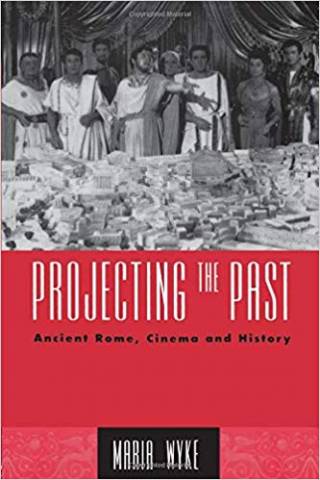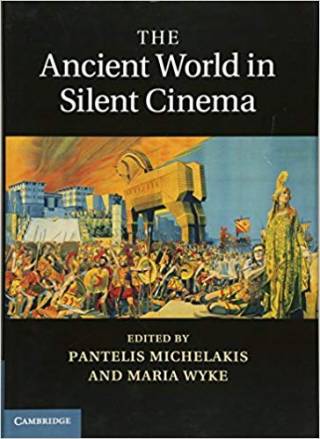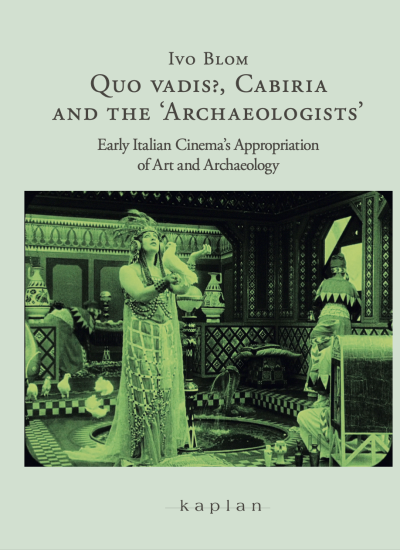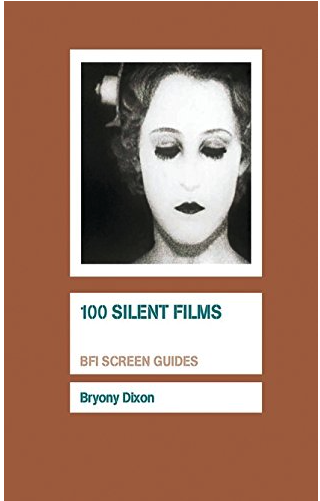by PI Maria Wyke
Projecting the Past
Brought vividly to life on screen, the myth of ancient Rome resonates through modern popular culture. Projecting the Past examines how the cinematic traditions of Hollywood and Italy have resurrected ancient Rome to address the concerns of the present. The book engages contemporary debates about the nature of the classical tradition, definitions of history, and the place of the past in historical film.
The Ancient World in Silent Cinema
This extensively illustrated edited collection is a first systematic attempt to focus on the instrumental role of silent cinema in twentieth-century conceptions of the ancient Mediterranean and Middle East. Hundreds of films were made in the first four decades of the twentieth century that drew their inspiration from ancient Greece, Rome, Egypt and the Bible. This collection asks what contribution did they make to the development of early cinema? How did early cinema's representations affect modern understanding of antiquity?
by Co-I Ivo Blom
In the early 1910s, Italy was world leader in cinema with its spectacular films of Roman and Carthaginian antiquity. Despite their innovations in storytelling and mise en scène, filmmakers like Guazzoni and Pastrone also looked backward to the 19th century, by appropriating not only literature and theatre, but also painting, which has been hitherto little researched. 'Archaeologist' painters like Gérôme, Alma-Tadema and Rochegrosse, who combined painstaking historical research with their own imagination of antiquity, thus experienced a second life in the 20th century medium of film. Thanks to the use of mechanical reproduction, their works became part of public memory and were reused by filmmakers, most evidently so in two key films of the early years of Italian cinema: Quo vadis? (1913) and Cabiria (1914). Yet, particularly for Cabiria, this book also creates a new archaeological framework from which to approach early Italian epics.
by Co-I Bryony Dixon
100 Silent Films provides an authoritative and accessible history of silent cinema through one hundred of its most interesting and significant films. As Bryony Dixon contends, silent cinema is not a genre; it is the first 35 years of film history, a complex negotiation between art and commerce and a union of creativity and technology. At its most grand - on the big screen with a full orchestral accompaniment - it is magnificent, permitting a depth of emotional engagement rarely found in other fields of cinema. Silent film was hugely popular in its day, and its success enabled the development of large-scale film production in the United States and Europe. It was the start of our fascination with the moving image as a disseminator of information and as mass entertainment with its consequent celebrity culture. The digital revolution in the last few years and the restoration and reissue of archival treasures have contributed to a huge resurgence of interest in silent cinema. Bryony Dixon's illuminating guide introduces a wide range of films of the silent period (1895-1930), including classics such as The Birth of a Nation (1915), The General (1926), Metropolis (1927), Sunrise (1927) and Pandora's Box (1928), alongside more unexpected choices, and represents major genres and directors of the period - Griffith, Keaton, Chaplin, Murnau, Sjöström, Dovzhenko and Eisenstein - together with an introductory overview and useful filmographic and bibliographic information.
 Projecting the Past
Projecting the Past
 The Ancient World in Silent Cinema
The Ancient World in Silent Cinema


 Close
Close

